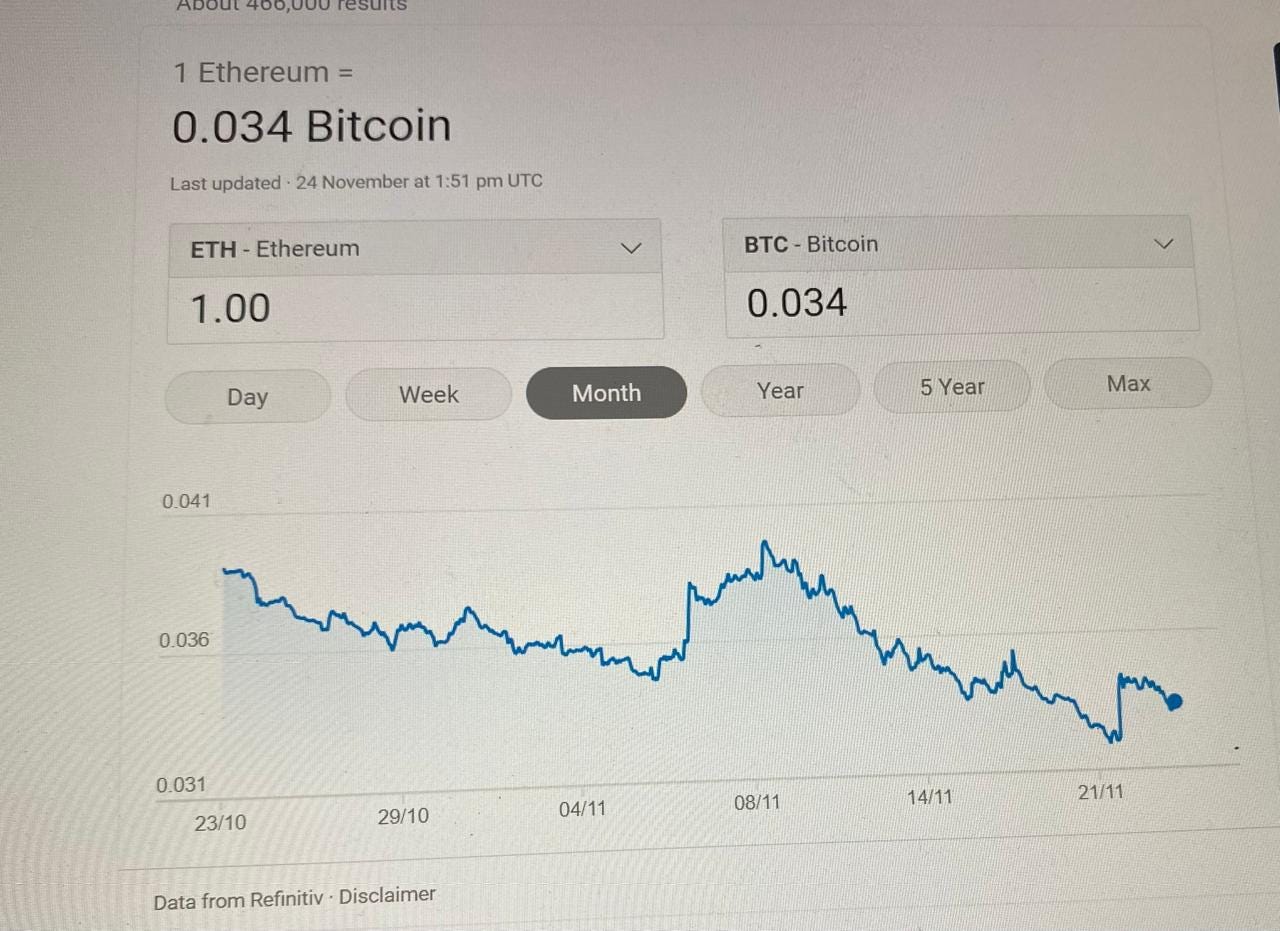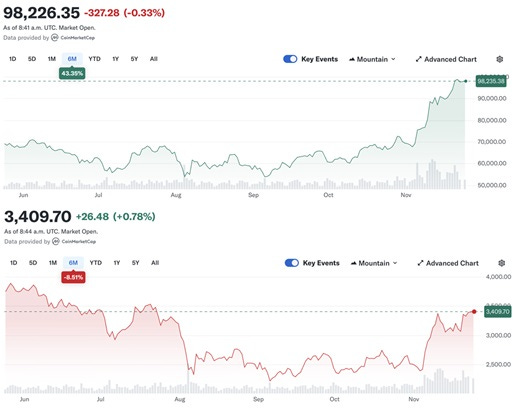Bitcoin and Ethereum – Ideal candidates for pair trading
Leading cryptocurrencies, which demonstrate a high degree of price correlation, showing divergences in current scenario
Pair trading is a market-neutral trading strategy commonly used in stock markets. It involves identifying two assets with a strong historical correlation and taking opposing positions to capitalize on their relative performance.
Key Components of Pair Trading
1. Selection of Pairs
Identify two securities (e.g., stocks or currencies) that exhibit correlated price movements, often due to shared industry or sector dynamics.
2. Market Neutrality
Execute a long position (buy) on one asset and a short position (sell) on the other. This reduces exposure to overall market movements, as profits rely on the relative performance of the selected pair rather than the broader market trend.
3. Exploiting Divergences
When the price relationship deviates from its historical trend, traders anticipate a reversion. The strategy involves:
Buying the undervalued asset.
Selling the overvalued asset.
As the price relationship normalizes, traders close both positions to realize profits.
Pair Trading in BTC and ETH
Bitcoin (BTC) and Ethereum (ETH), as leading cryptocurrencies, often demonstrate a high degree of price correlation, making them ideal candidates for pair trading.
Trading Strategy for BTC-ETH Pair
Identify Divergences: Look for deviations in the BTC-ETH price correlation.
Take Positions:
Long the undervalued asset.
Short the overvalued asset.
Exit Strategy: Close positions when the prices revert to their historical trend, locking in profits.
Advantages of BTC-ETH Pair Trading
Market Neutrality: Mitigates risks from market-wide price changes; profits are based on relative performance.
Volatility-Friendly: Leverages cryptocurrency volatility while hedging against directional market risks.
Diversification: Provides exposure to two distinct blockchain ecosystems.
Historical BTC-ETH Ratio Trends
The historical BTC/ETH ratio averages around 15 (e.g., 1 BTC = 15 ETH).
2021 Highlights:
During Ethereum’s DeFi and NFT bull run, the ETH/BTC ratio approached 12.5 ETH per BTC.
During Bitcoin dominance phases, the ratio dropped to 33+ ETH per BTC.
Example Trade:
In a scenario where ETH rallies, and the BTC/ETH ratio deviates significantly (e.g., to 30 ETH per BTC), BTC may appear undervalued relative to ETH.
Action: Go long on BTC and short on ETH.
Outcome: Close positions as the ratio reverts to 15, securing profits.
Current Context (November 2024)
BTC-ETH ratios have fluctuated between 28 to 30 ETH per BTC.
Ethereum is anticipated to appreciate, potentially aligning with historical averages. However, this is not a recommendation for investment—refer to the disclaimer below.
Further Exploration
To better understand Ethereum’s trajectory, consider researching:
2024 Price Predictions
Technological Advancements
Long-Term Growth Potential
Market Sentiment and Competition
Key Risks and Opportunities
Disclaimer
Pair trading BTC and ETH requires a strong understanding of both macroeconomic trends and technical market aspects. This document is for informational purposes only and does not constitute any investment advice. The opinions expressed are personal, may contain inaccuracies, and could be subject to bias. Readers are advised to perform their due diligence and consult professionals before making any investment decisions.




